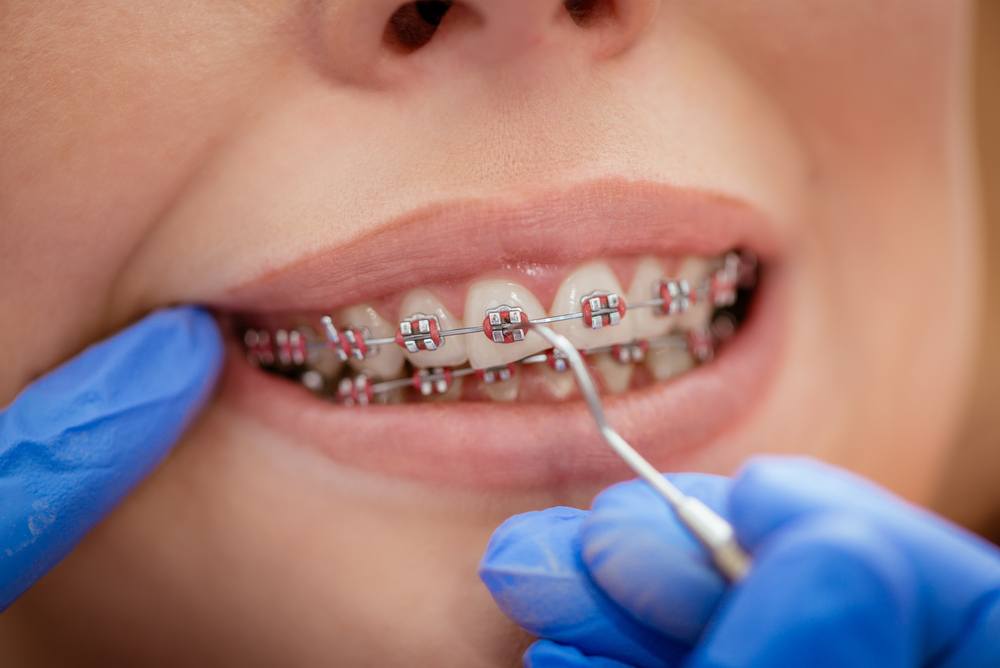What Sets Cumming Braces and Aligners Apart from Other Orthodontic Treatments
Comprehensive Overview to Orthodontics Procedures for Remedying Dental Misalignments
In the realm of orthodontics, the journey to attaining a completely straightened smile involves a myriad of treatments tailored to correct dental imbalances. From traditional braces to unseen aligners and also surgical alternatives, the field of orthodontics provides an array of solutions to deal with varying levels of oral irregularities. Comprehending the details of each procedure, including their systems, benefits, and prospective downsides, is important in making educated choices about one's orthodontic treatment. As we browse through the comprehensive guide to orthodontic procedures for remedying oral imbalances, the intricate details of each technique will unravel, losing light on the path toward a unified and useful oral alignment.
Orthodontic Procedures Overview

Normal modifications and tracking are important components of orthodontic treatment to make sure progression is on track and to make any required alterations along the way. By undergoing orthodontic treatments, people can not only accomplish a straighter smile yet likewise improve their general dental health and function.
Typical Braces: Exactly How They Function
When considering orthodontic treatments for dental imbalances, conventional braces stand out as a tried and true technique for dealing with teeth placing. Traditional dental braces consist of brackets, wires, and bands that function together to use continual pressure on the teeth, slowly moving them into the wanted positioning.
One key element of just how conventional dental braces job is the process of bone makeover. As pressure is applied to the teeth with the dental braces, the bone surrounding the teeth is reshaped to sustain the brand-new tooth settings. This remodeling is crucial for the long-term stability of the corrected positioning. People will require routine changes at the orthodontist's workplace to ensure the braces proceed to apply the appropriate stress for effective teeth movement.
Undetectable Aligners: Disadvantages and pros
These clear, customized trays are essentially invisible when worn, making them an attractive option for people seeking an extra visually pleasing orthodontic therapy. Individuals can remove the aligners prior to eating or cleaning their teeth, reducing the threat of food obtaining stuck in the home appliance and simplifying the cleansing process.

Surgical Orthodontic Options
Surgical treatments in orthodontics existing sensible options for dealing with complicated over here oral imbalances that might not be effectively dealt with with traditional orthodontic therapies. While undetectable aligners and typical dental braces can fix many orthodontic problems, specific situations call for surgical treatment to attain optimum outcomes. Surgical orthodontic alternatives are typically recommended for severe malocclusions, substantial jaw discrepancies, and instances where the underlying bone framework requires adjustment to accomplish appropriate positioning.
One typical medical orthodontic procedure find out here is orthognathic surgery, which includes repositioning the jaws to remedy practical concerns such as problem talking or eating. This surgical treatment is commonly done in collaboration with an orthodontist that aids align the teeth before and after the procedure. Surgical orthodontics might likewise involve treatments to reveal influenced teeth, remove excess periodontal tissue, or reshape the jawbone to develop a much more harmonious face account.
Before considering medical orthodontic options, patients go through an extensive evaluation to figure out the need and possible advantages of such interventions. cumming aligners. While surgery might seem overwhelming, it can considerably enhance both the feature and aesthetics of the smile in situations where traditional orthodontic therapies fall short
Retainers and Post-Treatment Treatment

Failing to abide with post-treatment treatment directions can result in regression, where the teeth progressively relocate back in the direction of their initial placements. Regular retainer wear, excellent dental health, and regular dental check-ups are vital for preserving the results accomplished with orthodontic surgical treatment and making sure the long-term stability of the corrected dental alignment.
Conclusion
In conclusion, orthodontic treatments supply numerous alternatives for remedying oral imbalances. Standard braces use metal brackets and cords to change teeth right into correct alignment. Invisible aligners offer a more discreet alternative yet might not be ideal for all cases. Surgical orthodontic options are available for extra serious misalignments. Retainers are commonly made use of post-treatment to preserve the new placement. Generally, orthodontic procedures can effectively boost dental health and visual appearance.
As we navigate with the comprehensive guide to orthodontic procedures for correcting oral misalignments, the complex details of each technique will certainly unfold, shedding light on the course toward a harmonious and practical dental alignment. - cumming aligners
One of the most common orthodontic therapies is the use of braces, which are composed of metal brackets and cords that apply mild pressure to progressively shift teeth into the wanted position.When taking into consideration orthodontic therapies for dental misalignments, conventional dental braces stand out as a time-tested technique for dealing with teeth positioning. Furthermore, unseen aligners may not be appropriate for complicated orthodontic issues that need even more significant teeth movement, as they are commonly suggested for moderate to modest instances. Retainers are tailor-made orthodontic gadgets made to hold teeth in their corrected positions after the completion of orthodontic treatment.